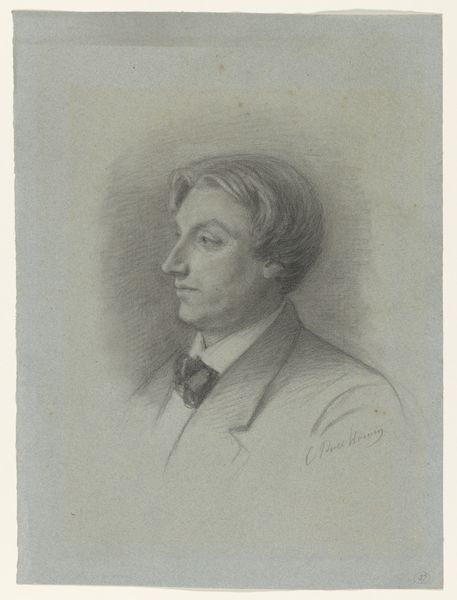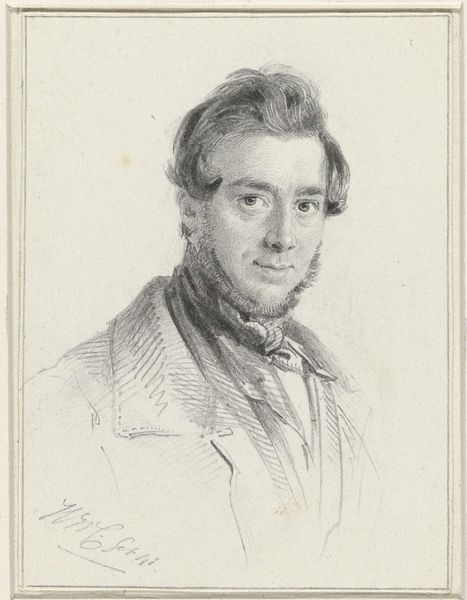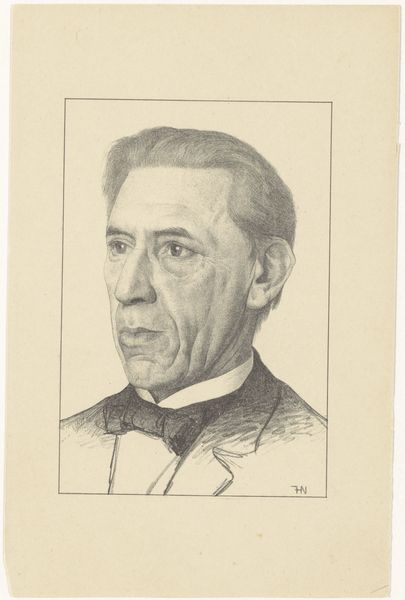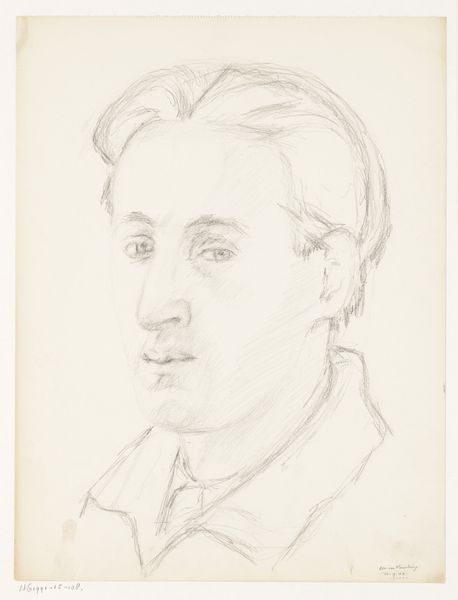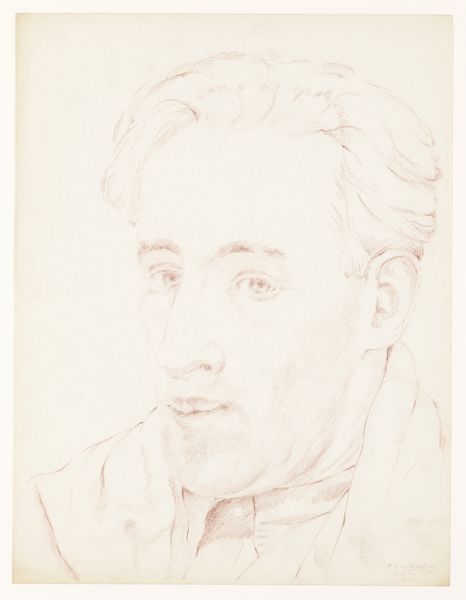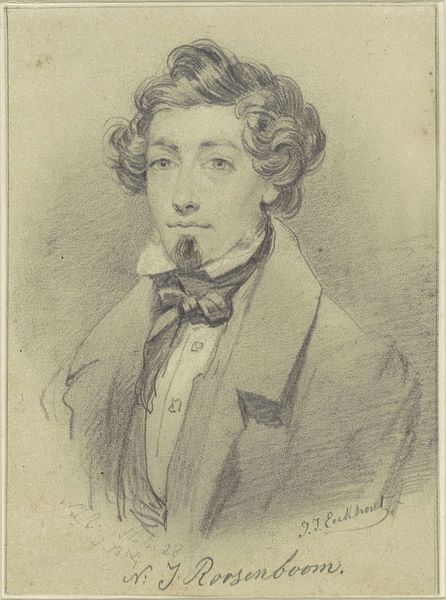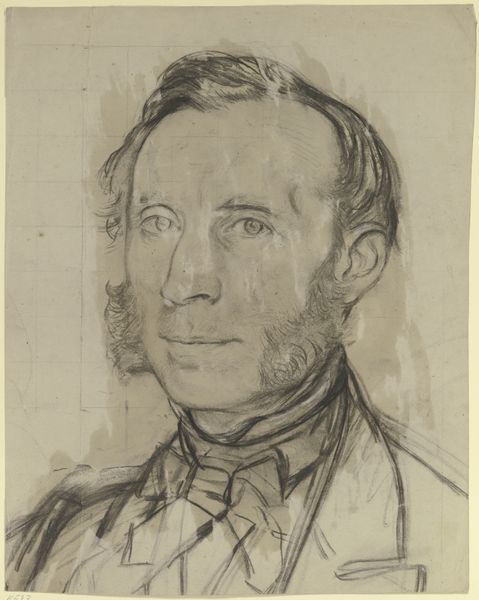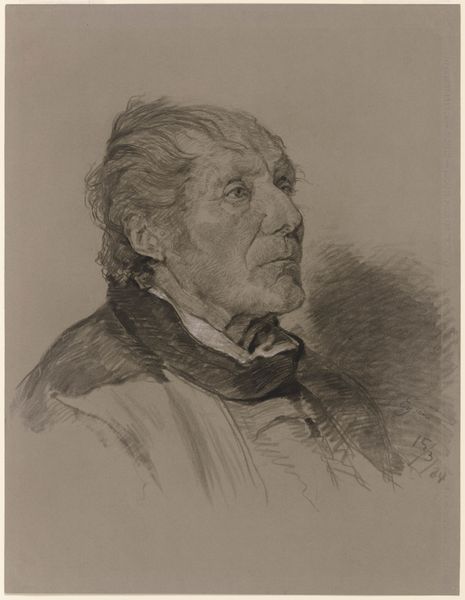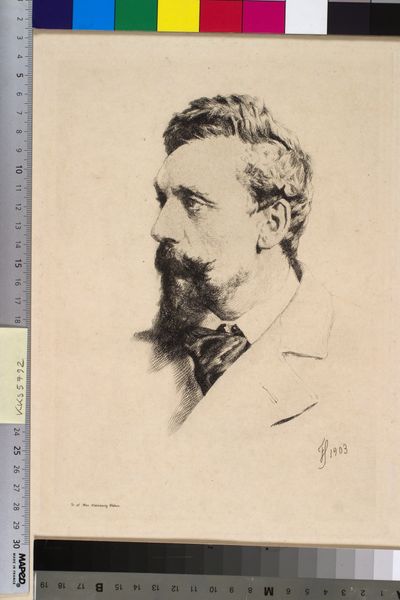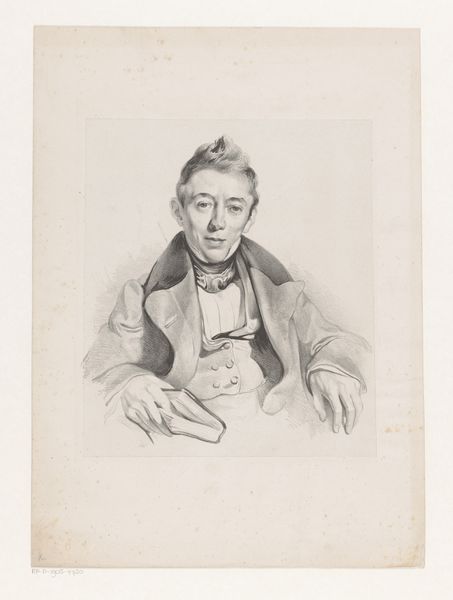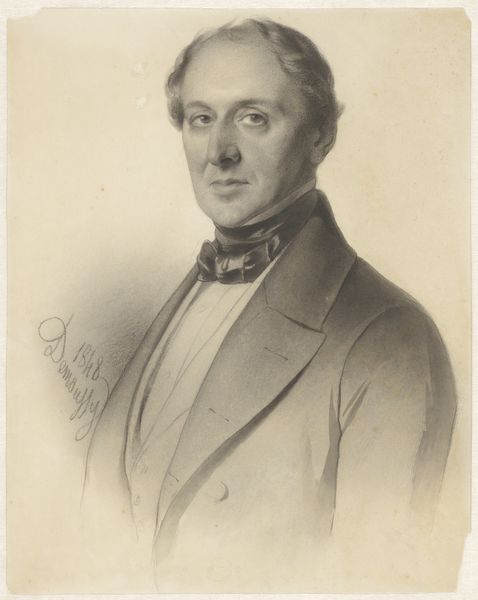
drawing, pencil
#
drawing
#
16_19th-century
#
pencil drawing
#
pencil
#
portrait drawing
#
academic-art
#
realism
Dimensions: height 208 mm, width 133 mm
Copyright: Rijks Museum: Open Domain
Johannes Hendrik Veldhuijzen drew this portrait of a man with a bow tie in July 1861. It’s a drawing done with graphite pencil, on what appears to be paper, or perhaps a very thin card. Pencil drawings like this one are interesting because they occupy a space between the preciousness of painting and the reproducibility of print. Veldhuijzen would have needed a steady hand and a sharp point to achieve this level of detail. Look closely, and you can see the subtle variations in pressure he used to create depth and shadow. The social context here is also important. Graphite pencils only became widely available in the 19th century, thanks to industrial production. They democratized drawing, making it accessible to a wider range of artists and amateurs. Veldhuijzen's choice of this relatively new medium speaks to a changing art world, where traditional hierarchies were beginning to blur. A work like this challenges our assumptions about what constitutes a finished, valuable artwork.
Comments
No comments
Be the first to comment and join the conversation on the ultimate creative platform.
